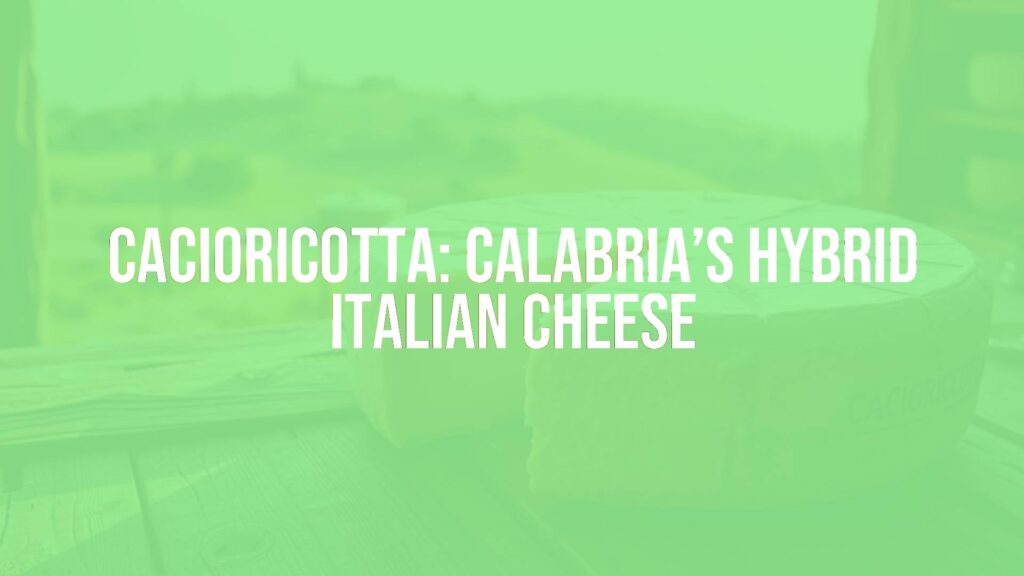Exploring Cacioricotta from Calabria
Cacioricotta is a distinctive cheese hailing from Italy’s southern region of Calabria, where it carries a reputation for its unique blend of techniques from both ricotta and aged cheeses. This semi-hard cheese embodies centuries of rural tradition and culinary ingenuity, fusing flavors and textures cherished in Calabrian cuisine.
Defining Features of Calabrian Cacioricotta
Unlike most cheeses, cacioricotta stands out due to an unusual method of production that merges the processes of making caciocavallo (a typical aged cheese) and ricotta. Producers use a combination of goat, sheep, or cow’s milk—or sometimes, a blend—resulting in a product with a creamy white interior and a compact but crumbly texture. The flavor, often tangy and slightly nutty, ranges from gentle and milky when young, to sharper and more intense as it matures.
Origin and Historical Background
The roots of cacioricotta in Calabria trace back to regions where sheep and goats roamed freely, providing abundant milk for rural families. The hybrid technique is believed to have arisen from a need to maximize the yield from limited dairy resources; by combining ricotta and cheese-making steps, nothing is wasted. Over centuries, this method became a local hallmark and was passed down through generations, becoming integral to Calabrian pastoral culture.
Production Techniques
Cacioricotta’s identity is tied to its special preparation. Milk is heated almost to boiling, similar to ricotta, before the rennet and cultures are introduced. This high temperature coagulation creates both curds and a delicate, ricotta-like result within the same wheel. Once shaped in traditional baskets, the cheese is lightly salted and aged for varying periods, developing its aromatic and flavorful characteristics. Some versions are aged for a few days for fresh consumption, while others can mature for months, intensifying the taste and making them ideal for grating.
Role in Calabrian Culture
This cheese is more than a foodstuff; it’s an expression of Calabrian identity. Shepherds and small-scale artisans have historically produced cacioricotta for family use, communal gatherings, and local markets. It’s a centerpiece during local festivals and rural feasts, symbolizing both hospitality and self-sufficiency.
Popular Ways to Savor Cacioricotta
Calabrians enjoy cacioricotta young as a table cheese, often paired with fresh vegetables, olives, or crusty bread. The aged form is beloved grated over rustic pasta dishes, especially those featuring tomato-based sauces or spicy Calabrian ‘nduja sausage. Its ability to enhance traditional recipes such as pasta alla Silana or simple salads underscores its versatility.
Pairings and Serving Suggestions
When serving cacioricotta, consider pairing it with full-bodied regional red wines to complement its savory edge. Accompany with ripe tomatoes, local cured meats, or seasonal fruits for a balanced antipasto. For a special touch, drizzle with Calabrian olive oil and sprinkle with fresh herbs to highlight its subtle dairy notes.
Diverse Local Variations
Within Calabria, as well as neighboring regions, subtle variations emerge depending on the milk source and aging regimen. Goat and sheep versions offer pronounced wild herb notes, while cow’s milk cacioricotta is milder and sweeter. Some small producers smoke or infuse their cheese with local flavors, adding depth to this already complex product.
A Symbol of Enduring Tradition
Cacioricotta remains an artisanal favorite, championed by farmers’ markets and slow food movements striving to preserve Southern Italy’s unique gastronomic legacy. Its story and flavor are inseparable from Calabrian heritage—making every taste a journey through the region’s history and landscape.

